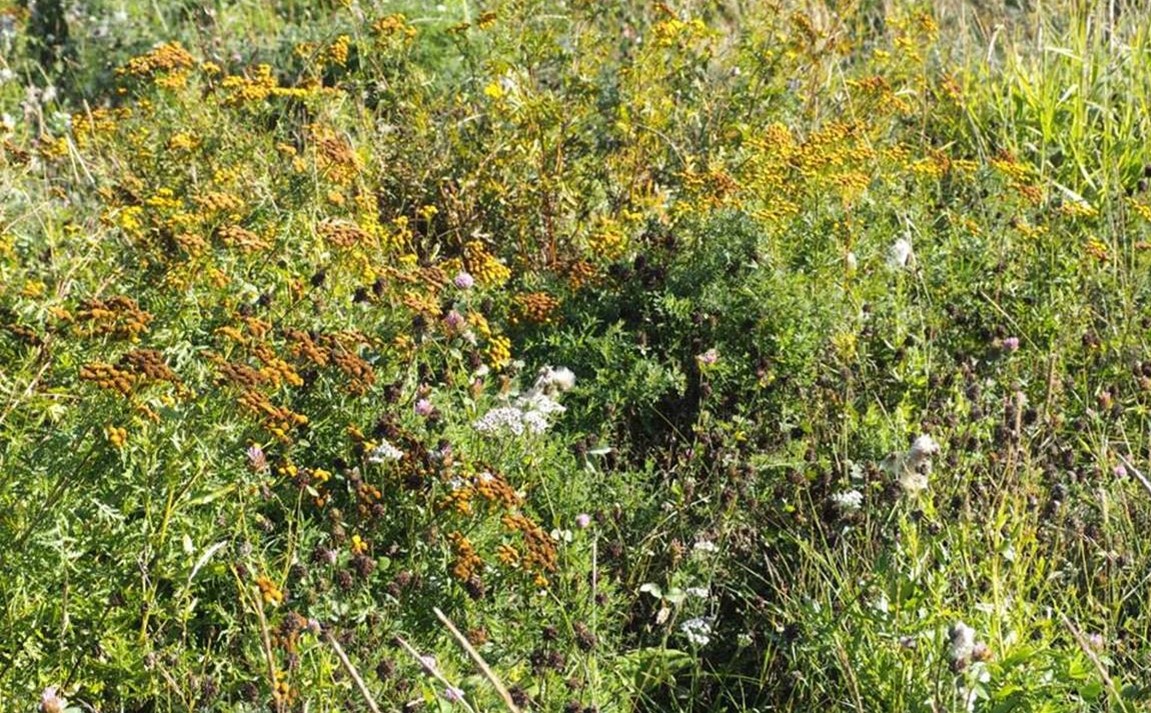
Pollinator-friendly nature-based solutions in Tampere
- Wed, 19/05/2021
Within the frame of the #Flowers4Bees social media campaign, UNaLab helps spreading the word about one of the most dangerous environmental threats - the progressive extinction of pollinator insects, and shares information on pollinator-friendly nature-based solutions from our front-runner city Tampere.
THE BLOOMING ALLUVIAL MEADOWS IN VUORES ATTRACT POLLINATORS
Next to the stormwater basins and ditches in Vuores, you can find alluvial plains covered in meadow flowers. These alluvial plains do not have a permanent water surface, but water gathers in the areas during heavy rainfalls and when the snow melts in spring. The nutritious sludge of the stormwater remains in the alluvial plains, bringing nutrients to the flowers, which, in turn, attract pollinators such as butterflies, bumblebees and bees to the site. The alluvial meadows do not only prevent urban floods and treat stormwater, but also provide an important habitat for pollinators. Next summer, pollinators in the alluvial meadows of Vuores will be observed together with the residents through the iNaturalist tool. More detailed information about the pollinator event will follow this summer, so stay tuned!
THE GREEN WALL WILL OFFER HABITATS FOR POLLINATOR INSECTS
Next summer, Tampere will build a novel green wall in the Viinikanlahti district. The wall plants are made up of local species that live on top of rocks and that survive in cold conditions. Additionally, the city will use forest peat and plants from a new city district construction site for the green wall. Rainwater harvested from the roof will be used for irrigating the wall. The local plants offer living habitats for pollinators and the city will monitor the pollinators on site. The green wall is located along an important ecological corridor in the city and is one of the element supporting the biodiversity of that corridor. In addition, a popular walking/bicycle route passes by the green wall and the city hopes that the aesthetic and diverse wall will help improving the wellbeing of city dwellers who pass by or live in the dense area.
THE COMMUNITY HORSE PARK IS CHANGING BIODIVERSITY
A horse park was implemented in the Central Park of the Vuores city district as one of Tampere’s small-scale demonstrations. These demonstrations were funded by the City of Tampere through innovation vouchers, but other city stakeholders were responsible for planning and implementing them. In this case, an old local horse stable built a community horse paddock as an example of how a green space can be managed for multipurpose use. According to on-site biodiversity monitoring, the species in the paddock differ from those elsewhere in the park. The horse grazing, which represent an old type of "landscape management method", has consequently changed the biodiversity towards an old "agricultural pasture/meadow" type, which is becoming rare. This method therefore enables the conservation of endangered traditional biotope species in cities.